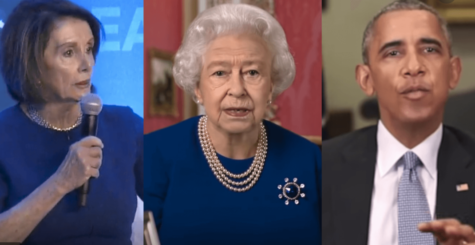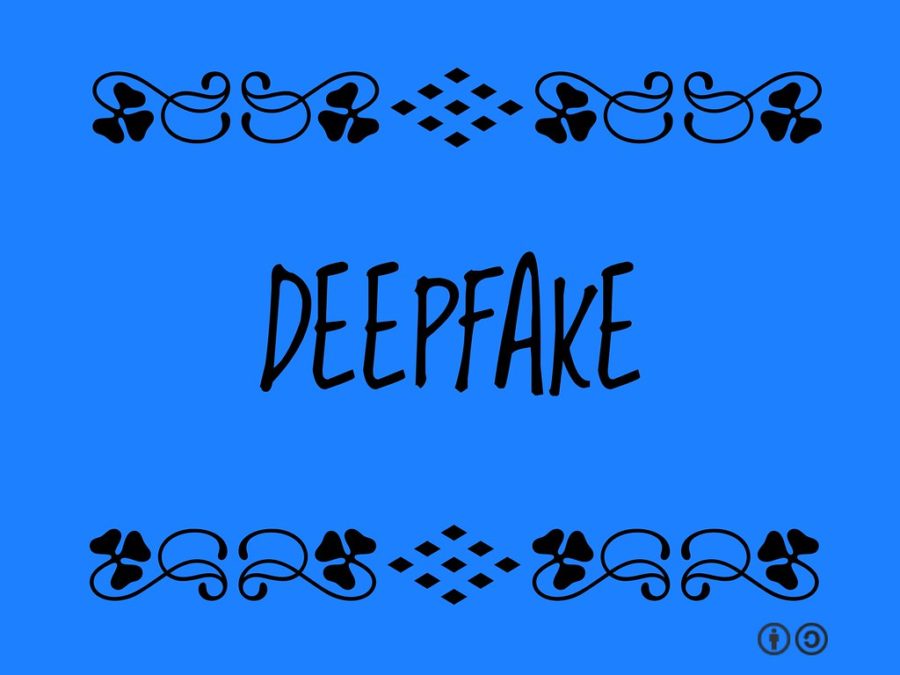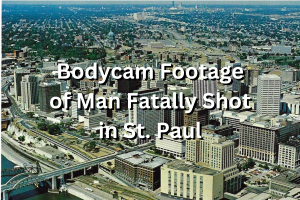Deepfake: The dangerous new technology designed to deceive
photo via flickr under the creative commons license
Deepfake is technology that can be used to deceive the public.
April 8, 2021
After twelve brutal months of a global pandemic, murder hornets, and Hollywoodesque capitol insurrections, there isn’t much that could seem too crazy to be true. With popular social media apps like TikTok and Snapchat, our generation is exposed to more than ever before. I am sure we have all seen some video of Trump or Biden saying something ridiculous and thought to ourselves, “This CAN NOT be true.”
Thanks to technology like Deepfake, there is a good chance that what we are seeing is indeed fake news. Deepfake technology is the latest curveball to arise this decade, and it isn’t curable with a vaccine. This technology is used to create the impression that somebody is saying or doing something when in reality, it is somebody else.
Thanks to Deepfake, an ordinary person can record themselves talking or giving a speech and with the right equipment, make it look IDENTICAL to somebody else, most often a politician or celebrity.

There are many reasons to use this technology, and more times than not it isn’t for the better.
One apparent use of Deepfake is to imitate celebrities or politicians. We have seen many examples of this on social media, most notably an account on TikTok called “deeptomcruise.” This account is dedicated to publishing Deepfaked videos of Tom Cruise doing everyday activities. The voice, the looks, and the petite figure all look nearly identical to the real thing. The scariest part of this may be the immense following of over 500K! One video even racked up over 10M views, and 1.1M likes. In this video, “Tom Cruise” addresses his followers and says he “is going to play some sports.” The actor then proceeds to put on a top hat and hit a golf ball before the video ends. I have seen this video for myself and let me tell you, I thought I had accidentally stumbled on the real account of Tom Cruise. However, I made sure that this was the Deepfake account and sure enough, it was.
After being fooled so easily, I wondered how many people did not have my knowledge, and assumed it was real. I decided to put this editing to the test by seeing if it could fool someone who has little knowledge about this kind of technology, my mother Megan Patzner.
This video was played for my mother BEFORE telling her that this is not the real Tom Cruise. After showing her the video, I asked her a couple of questions prior to the big reveal.
Q: “Why do you think Tom Cruise made this video?”
A: “I think he probably just wanted to show off his golf swing and interact with his fans.”
Q: “Do you think there was anything about this video that seemed scripted or fake?”
A: “No, I just think that he wanted to make a quick video to show fans that his is still trying to interact with them.”
After this set of questions, I told my mom that this video was DEEPFAKED, and none of it was real or approved by Tom Cruise. I asked her how this technology made her feel and her response was similar to what I thought it would be.
Patzner said, “Wow, the voice even sounds like him! Most of the time you can tell when something is edited because the details are off or something just doesn’t really seem right about it. I really thought that was actually Tom Cruise, that is scary. It kind of makes you think that there is a lot more fake stuff out there than you know of.”
Clearly, this is a very realistic way to imitate somebody.
Although the Tom Cruise videos are some of the most relevant examples of Deepfake, it is not the only time this technology has been used on somebody famous. Perhaps the most alarming case would be when somebody tried to impersonate Queen Elizabeth. In this alternate Christmas message from 2020 we see the Queen of England making some pretty casual jokes and burns while delivering a message to the rest of the world. It almost seems like a SNL skit the way she calls out celebrities and makes jokes about pregnancy and toilet paper problems.
Sam Gregory, the director of a non-profit organization dedicated to video and human rights, has made his opinion on this technology, public and clear. He is completely against the widespread use of this technology. Warning the dangers of this new imitation tool, Gregory hopes that this trend dies off quickly before somebody’s reputation or livelihood is seriously damaged.
That’s the threat level that worries me, when it [becomes] something that’s less easily controlled and more accessible to a range of actors.
— Sam Gregory, director of Witness.
Hopefully, this technology is contained and soon limited to uses for memes and inside jokes amongst friends. If this technology becomes more widespread and more developed, we could soon be living in a world of complete falsehoods and questions. Regardless, this technology is very impressive and deceiving.










